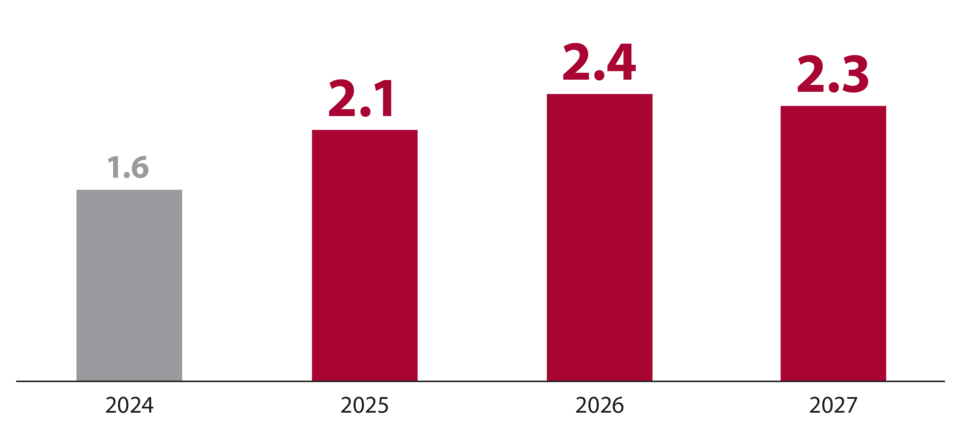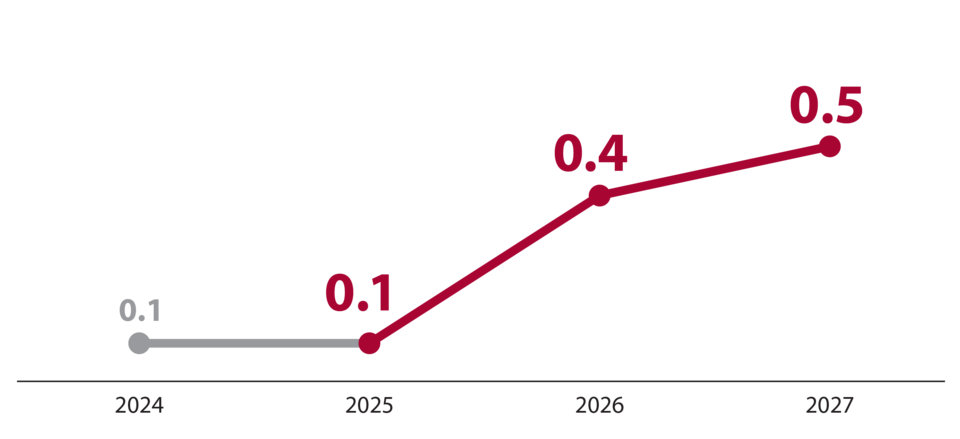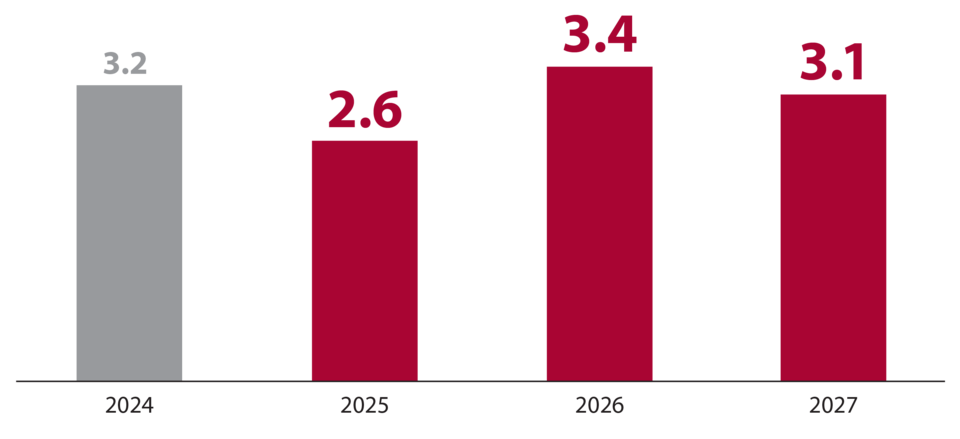Slovenian Economic Mirror 5/2025
In Slovenia, the values of short-term indicators for April and May point to weak growth in trade sectors, construction and manufacturing. Household consumption strengthened, while exports and imports continued to decline. In the first four months of the year, economic activity was higher year-on-year only in trade, transport and storage, and certain high-technology manufacturing sectors. After an improvement in May, economic sentiment…
Charts of the week from 30 June to 4 July 2025: consumer prices, unemployment, exports and imports of goods and other charts
Amid higher monthly prices, year-on-year inflation strengthened slightly again in June (by 0.4 p.p. to 2.2%). Year-on-year, the highest growth continues to be recorded in the food and non-alcoholic beverages group, where inflation strengthened to 6.7% in June (from 5.5% in May), contributing more than half of the annual inflation. The number of registered unemployed persons…
Charts of the week from 23 to 27 June 2025: Economic sentiment and turnover in trade
The economic sentiment indicator declined in June after improving in May and was also lower year-on-year. Real turnover in retail trade with food products strengthened significantly in April following a sharp decline in March, and was also higher year-on-year. Real turnover in other retail sectors was also higher year-on-year in April and cumulatively in the first four months of the year.
Charts of the week from 16 to 20 June: Slovenian industrial producer prices, electricity consumption by consumption group, number of persons in employment and other charts
The year-on-year growth in Slovenian industrial producer prices remained at 1% in May, with the highest increase still observed in non-durable consumer goods. With one fewer working day this May, industrial electricity consumption, which can serve as an indicator of economic activity, was 3% lower…
National productivity board
IMAD analyses productivity and competitiveness as the national productivity board
GDP and prices
Economic growth is expected to accelerate to 2.1% this year, which is slightly lower than expected in the autumn forecast. Domestic consumption will be a key driver of GDP growth this year, in particular continued growth in private consumption supported by rising wages and social transfers, as well as a recovery in investment after last year’s decline. Economic growth is expected to accelerate slightly over the next two years. Average inflation will be 2.3% this year. While price increases will remain moderate in most groups, services will continue to outpace overall inflation. In the absence of shocks, inflation is expected to fall slightly after 2025 and hover around 2%.
Labour market
In addition to economic conditions, demographic changes also play a significant role in shaping the labour market. Given the high level of employment and labour shortages, employment is expected to increase by 0.1% this year and by 0.4% and 0.5% respectively over the next two years, amid moderate economic growth. Unemployment will continue to decline slightly, with the number of registered unemployed falling not only due to the transition into employment, but also due to the increasing transition from unemployment to inactivity or retirement.
International trade
With the gradual recovery in foreign demand, exports of goods and services are expected to continue growing this year and in the coming years, albeit at a slower pace than before the pandemic and the energy crisis. After last year’s strong growth, which moderated markedly in the last quarter, growth in goods exports is expected to align more closely with foreign demand growth, while growth in services exports will accelerate further. The current account surplus remained high last year and will narrow gradually in 2025–2027.
IMAD

The Institute of Macroeconomic Analysis and Development of the Republic of Slovenia is an independent government office.
The Institute performs the following tasks:
- it monitors and analyses current trends and development in its economic, social and environmental dimensions;
- it monitors and analyses the achieving of the development objectives of the country;
- it prepares macroeconomic forecasts and other expert groundwork that serve as the basis for budgetary planning and formulating economic policy measures;
- it analyses productivity and competitiveness as the national productivity board;
- it carries out research work.



